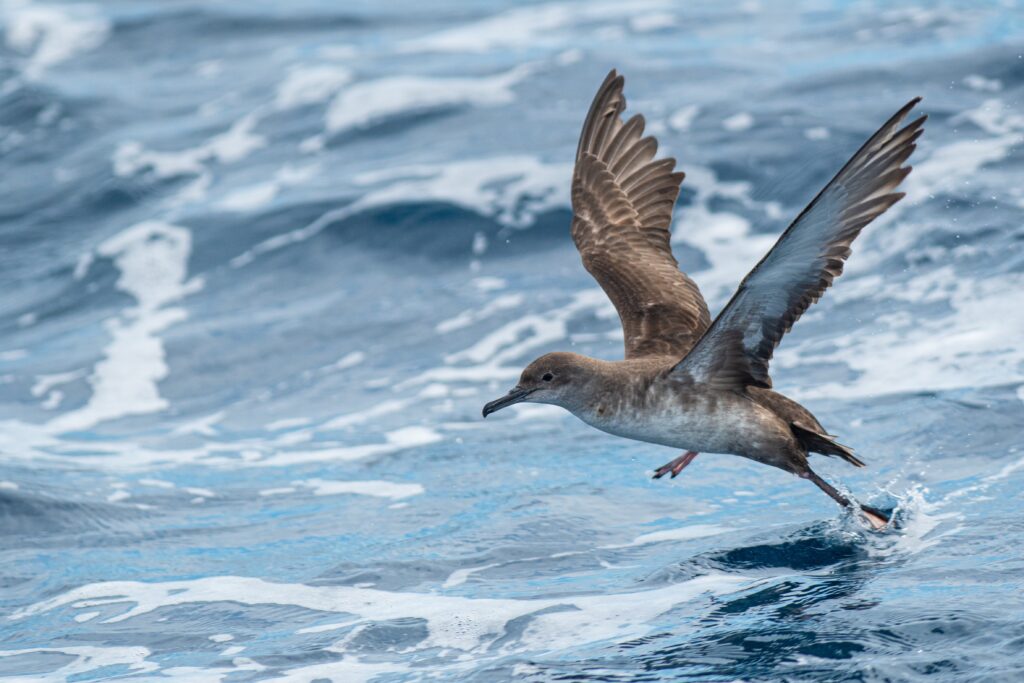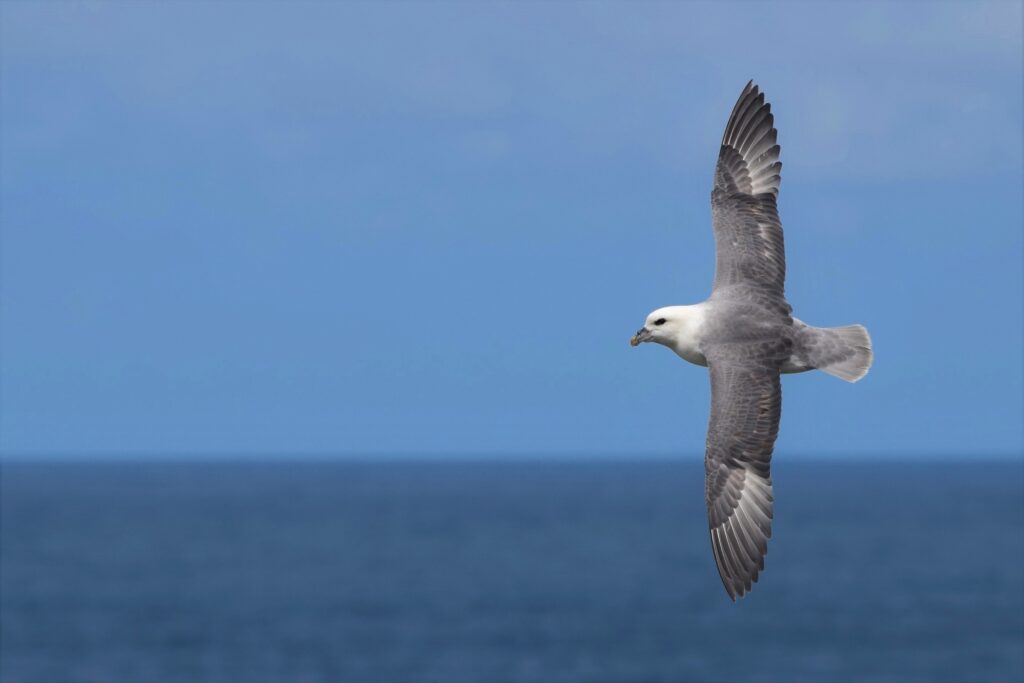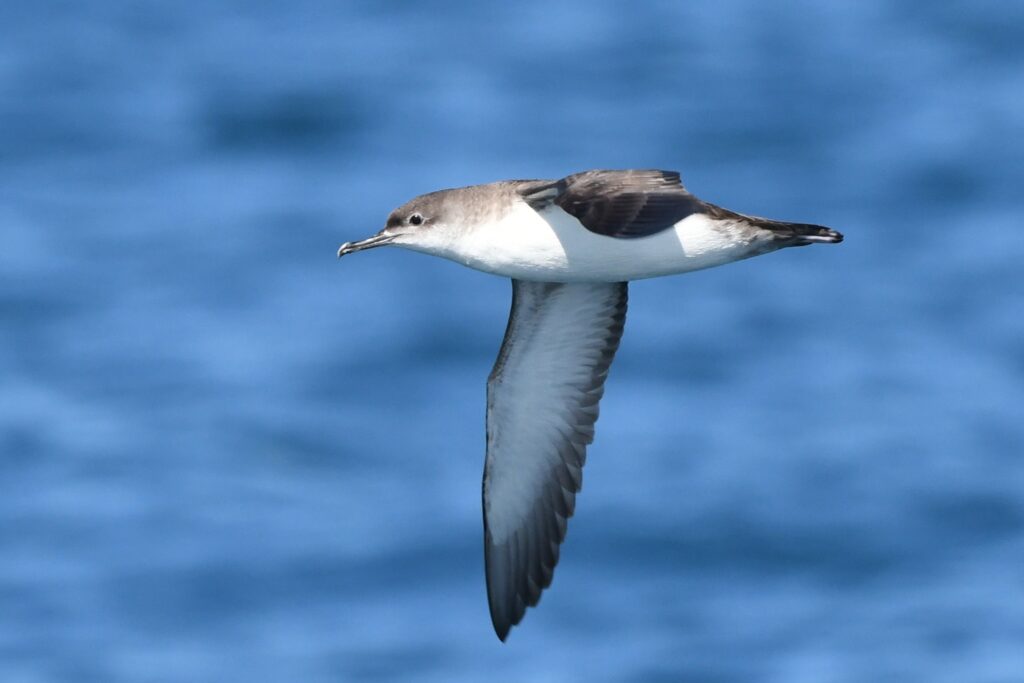New research highlights where threatened seabirds are most exposed to marine plastics

Plastic pollution is an emerging threat to seabirds, and after tracking the movements of more than 7,000 petrels, a BirdLife led research team has identified several areas where species are most at risk of encountering plastic. Worryingly, they also found that some threatened species are more at risk of exposure, emphasising the need for international collaboration to address the issue.
From struggling sea turtles entangled in packaging and albatrosses inadvertently feeding their chicks with plastic items scoured from the ocean’s surface to once idyllic beaches lined to the brim with plastic bags, bottles and other debris, plastic pollution is behind some of the starkest imagery of our ever-growing impact on the natural world. Its effects are pervasive, with rubbish making its way to some of the Earth’s most remote islands. However, plastic pollution is not evenly distributed around the world, and a key step to limiting its impact on nature is to identify where species are most at risk of being exposed to debris.
An extensive new BirdLife-led study – in partnership with University of Cambridge, the British Antarctic Survey, Fauna & Flora and the 5 Gyres Institute – published in Nature Communications reveals the areas of the ocean where some of the world’s most threatened seabirds are at the greatest risk of encountering potentially deadly plastics. To identify where seabirds are most at risk of being exposed to plastic, the team assessed the movements of 7,137 birds from 77 petrel species, analysing how these overlapped with maps of plastic prevalence in the world’s oceans.
It is the first time tracking data from so many species has been combined with plastic distribution data on a global scale, and reveals that the Mediterranean and Black Sea are particular ‘danger zones’ – together accounting for more than half of plastic exposure risk. The remote high seas and the waters surrounding the USA, Japan and the UK were other high-risk areas, underlining the truly global scale of the issue.
“Plastics are a widespread threat to marine life, but pollution is not spread evenly around the world’s oceans,” said Dr Bethany Clark, Seabird Science Officer at BirdLife International, and the study’s first author. “Our study shows that petrels are exposed to plastic in enclosed, busy seas, such as the Mediterranean, and remote mid-ocean gyres that concentrate plastics from distant sources. However, even species with low exposure risk have been found to eat plastic. This shows that plastic levels in the ocean are a problem for seabirds worldwide, even outside of these high exposure areas.”
Header image: The Critically Endangered Balearic Sheawater, which breeds in the Mediterranean, is one of the species most at risk of plastic exposure © Arnau Soler/Shutterstock
A global issue
The researchers focussed on petrels, an understudied yet particularly threatened group of seabirds. They are true ocean wanderers and can be found across nearly all corners of the globe, migrating across extraordinarily vast distances – Short-tailed Shearwaters, for instance, journey roughly 30,000km around the Pacific from their breeding grounds in southern Australia every year. The sheer breadth of their distribution therefore makes them important ‘sentinel species’ when assessing broad threats facing species and ecosystems.
By analysing the movements of these wide-ranging seabirds, the team highlighted that the scale of plastic pollution is one that transcends national borders, and highlights the importance of international collaboration to address its impacts. For almost all the species they tracked, the likelihood of encountering plastics largely occurs outside of the national waters of the countries in which they breed, while a quarter of all plastic exposure risk is in the high seas – which are remote waters 200-nautical miles from the coast and beyond the jurisdiction of any one country. Here, plastic pollution is closely linked with gyres, which are large systems of rotating ocean currents where vast accumulations of plastic debris form.
“There were large differences in plastic exposure risk between species, populations and seasons, with more risk shared among threatened species.” said Dr Ana Carneiro, Marine Science Manager at BirdLife International and joint corresponding author of the study. “Across all species, 25% of exposure risk occurred in the high seas.”

Threatened species at risk
There is mounting evidence of the dangers plastics pose to seabirds, which often mistake small plastic fragments for food, become entangled as they forage and ingest plastic already eaten by their prey. This can lead to injury, poisoning and starvation, with some plastic also containing toxic chemicals harmful to seabirds. Petrels are particularly vulnerable, as they can’t easily regurgitate plastic and have also been recorded unwittingly feeding plastic to chicks during the breeding season.
“We lack a comprehensive understanding of plastics’ impact on species and ecosystems, but what we do know is deeply concerning. Thus, a detailed knowledge of when and where marine animals are most at risk of encountering plastics while at sea could not be more timely,” said Dr Jennifer Lavers, Esperance Tjaltjraak Native Title Aboriginal Corporation, co-author of this paper and author of a recent study on Plasticosis, a newly-discovered disease in some seabirds linked to ingesting plastic.
The researchers also gave each of their study species an ‘exposure risk score’ to indicate how likely they are to encounter plastic during their time out at sea. Worryingly, they found that many species threatened with extinction scored particularly highly. Species that were found to be particularly at risk include Balearic Shearwater and Newell’s Shearwater (both Critically Endangered) and Hawaiian Petrel (Endangered). Given these birds already face an array of human pressures, their high risk of exposure to plastics is of great conservation concern.
“Many of the birds included in our study are already affected by a wide range of threats including climate change, being caught in fishing gear, competition with fisheries and invasive species,” said Clark. “While the population-level effects of plastic exposure are not yet known for most species, many petrels and other marine species are already in a precarious situation and continued exposure to dangerous plastics adds to these pressures. Coordinated action to stem the flow of plastic pollution is needed now to protect seabirds and other marine life around the world.”

“While the population-level effects of plastic exposure are not yet known for most species, many petrels and other marine species are already in a precarious situation and continued exposure to dangerous plastics adds to these pressures. Coordinated action to stem the flow of plastic pollution is needed now to protect seabirds and other marine life around the world.”Bethany Clark, Seabird Science Officer at BirdLife International, and the study’s first author
‘Global assessment of marine plastic exposure risk for oceanic birds‘ was published in Nature Communications.
The study was led by a partnership between BirdLife International, the University of Cambridge, and the British Antarctic Survey, in collaboration with Fauna & Flora and the 5 Gyres Institute. The study was made possible by the collaboration of over 200 seabird researchers around the world, including scientists from many BirdLife partners: RSPB (UK), SEO/BirdLife (Spain), SPEA (Portugal), LIPU (Italy), BirdLife Malta, BIOM (Croatia), BirdLife Norway, Nature Seychelles, Mauritian Wildlife Foundation and Birds Canada.
This research was funded by the Cambridge Conservation Initiative’s Collaborative Fund for Conservation, sponsored by the Prince Albert II of Monaco Foundation, and the Natural Environment Research Council.